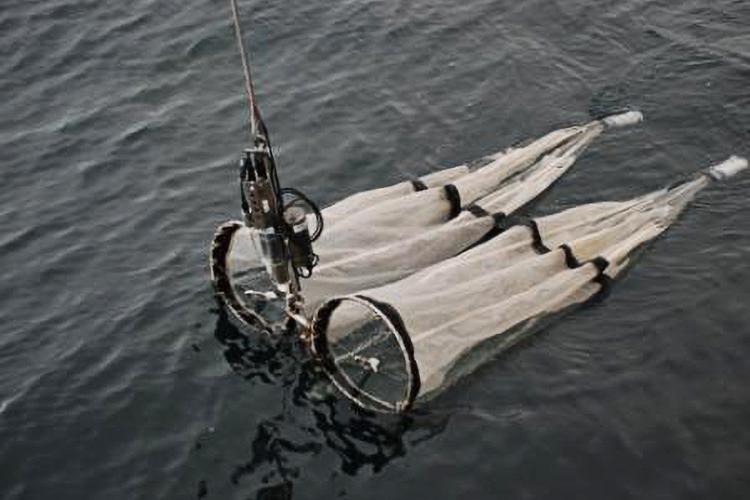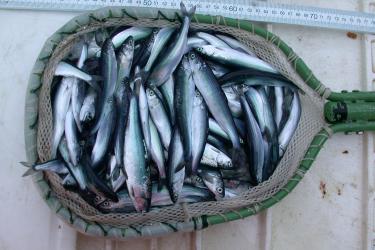
Ecosystem Monitoring and Assessment Program staff member inoculates phytoplankton samples.

Oceanographic CTD retrieval.
Oceanographic Collections in the Bering Sea Include
- Physical and Chemical Data collected via CTD and TSG
- Temperature
- Conductivity
- Salinity
- Density
- Light Transmission
- Photosynthetically available radiation (PAR)
- Oxygen
- Chlorophyll a
Biological Data Includes
- Phytoplankton (for discrete analysis of chlorophyll a and primary production experiments using stable isotopes of carbon and nitrogen)
- Zooplankton
- Jellyfish
- Primary Production experiments for uptake rates of various nutrients



